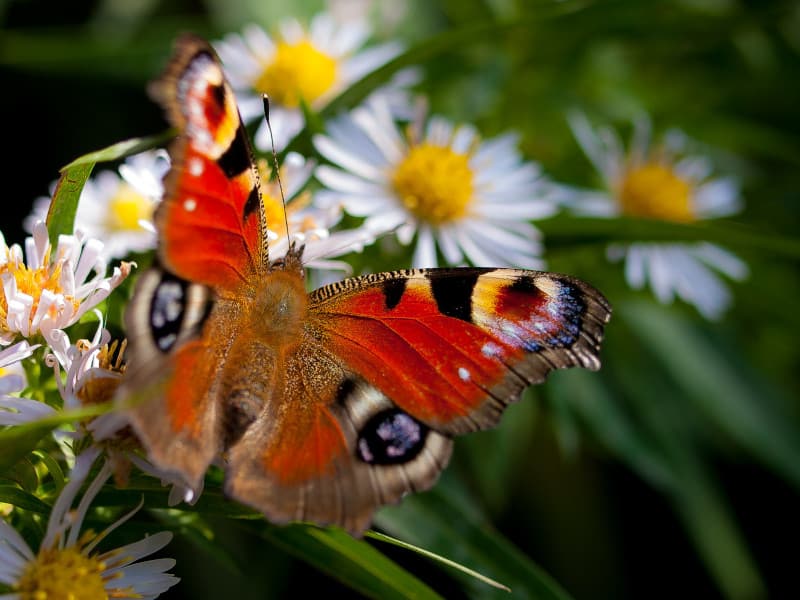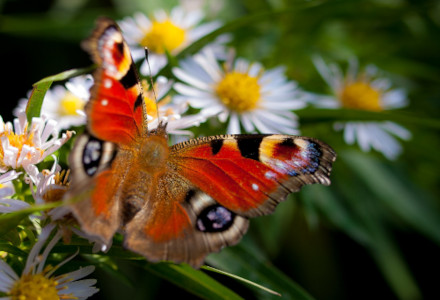
Peacock Butterfly Facts
- For many reasons, this stunning Lepidoptera most frequently goes by the common name of the Peacock Butterfly. Yet, the beautiful butterfly also has another, general name it’s known by. That’s because it’s also often referred to as the European peacock.
- Among professionals, such as researchers, however, it’s better known by its technical name. Fortunately for the rest of us, though, that’s a much simpler to pronounce term than most such terms. That’s due to the fact that it bears the official name of Aglais io.
- It received that official moniker due to the efforts of the renowned Swedish researcher, Carl Linnaeus. He recorded the first official recognition of the invertebrate as a separate and distinct species. This scientifically noteworthy deed occurred in 1758.
- Entomologists originally classified it as the sole member of the genus Inachis. Subsequent research, however, later reassigned it to another. Due to the efforts of later researchers, it’s now located in the genus Aglais, along with other related species.
- Thankfully, the work of Nature and evolution appears to be maintaining a population base that’s both stable and sufficient. This further seems to hold true throughout the entirety of its natural range. The IUCN, therefore, presently has no listing for it.
- The Peacock Butterfly nevertheless does face some potential threats to its existence. In this regard, it follows the pattern of most species on the plant. Habitat degradation or loss pose a potential danger. Its greatest threat, though, is likely climate change.
Related Articles
Peacock Butterfly Physical Description
Like many of its relatives, the remarkable Peacock Butterfly easily draws the eye of all those fortunate enough to encounter it. Unlike some of them, however, it merits that attention for more than just its distinctive appearance. It’s also has a respectable wingspan.
It further differs from many of its kindred in yet another way. That’s due to the fact that the creature displays no noticeable degree of sexual dimorphism. Distinguishing the two genders, therefore, frequently presents a problem for the average amateur viewer.
Mature individuals of both sexes attain an average wingspan measuring between 2.0 – 2.2 in (50 – 55mm). Exceptional specimens occasionally occur, of course. Yet even these scattered individuals rarely exceed this by much. Various factors, including environment, affect this.
It’s the visual aspect of the wings of the stunning Lepidoptera that garner the most attention, though. The underneath of the wings typically displays a uniform light brown. This appears in random patterns of shades and swirls. Irregular darker lines also cross the hindwings.
The upperside, however, displays as vastly different. Here is where the Peacock Butterfly earns its name. The top part of the forewing shows red, with brown patches. It also shows black-gray edges. Eyespots, like those of peacocks, also appear on the edges of each wing.
- Kingdom: Animalia
- Phylum: Arthropoda
- Class: Insecta
- Order: Lepidoptera
- Family: Nymphalidae
- Genus: Aglais
- Species: A. io
Peacock Butterfly Distribution, Habitat, and Ecology
Fortunately for it, the visually dazzling Peacock Butterfly inhabits a comparatively broad swathe of the globe. This same range also happens to include regions already well known for their abundance of natural beauty. It therefore fits right in with its surroundings.
Indeed, this marvel of evolution evolved as native to most of the continent of Europe. Yet its range doesn’t simply stop there. That’s due to the fact that population groupings of this wondrous Arthropod also appear in temperate Asia. It’s further seen as far east as Japan.
Throughout the entirety of that range, though, it displays the same preferences in its choice of habitat. These, however, also remain comparatively broad. Populations of the beauty inhabit a wide range of locations, though all appear in areas of temperate conditions.
This flexibility also includes a range of altitudes. Concentrations of the invertebrate appear at altitudes ranging from lowland sections, to altitudes of up to 8,200 ft (2,500 m) above sea level. These include such locations as meadows, fields, pastures, woods, parks, and gardens.
Adult specimens of the Peacock Butterfly feed in much the same manner as other butterflies. These feed primarily on the nectar of various local plant species, such as dandelions, clover, and willows. Some also augment this by feeding on tree sap and rotten fruit.
Males tend to be territoral. Females, though, move over large areas. Females lay eggs in early spring, typically in batches of around 400. Its eye-spots deter most, though not all, avian predators. Rodents, however, are not bothered by these, and thus form its major predator.
Species Sharing Its Range
Check out our other articles on 5 Bewildering South American Birds, Texas Blind Salamander, Villarrica, Snowshoe Hare, Magnolia Green Jumper, Wilson’s Bird-of-paradise

